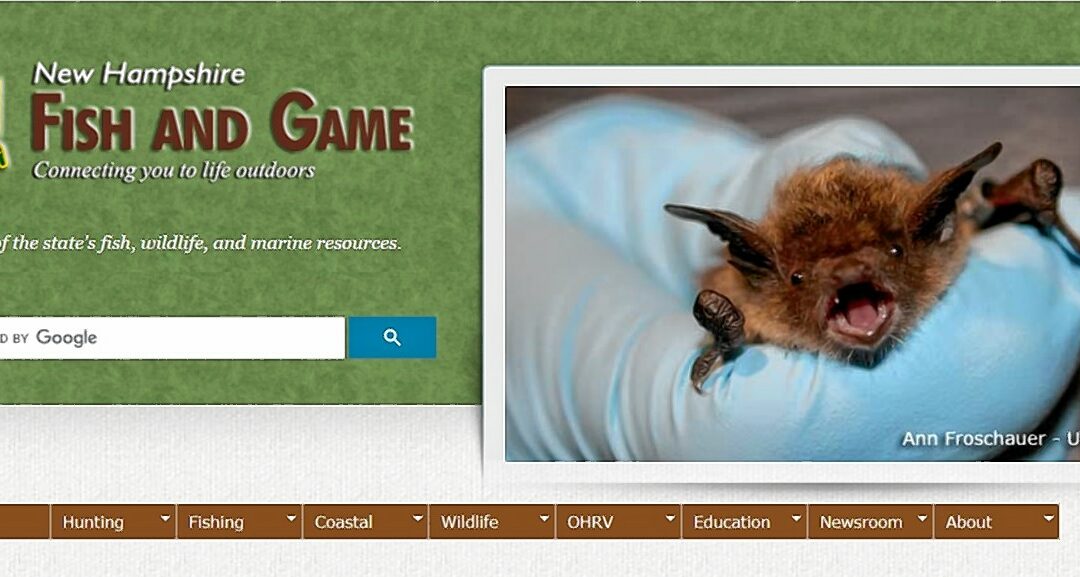It’s a sad reality that most wildlife projects for citizen scientists are created to quantify bad news, usually by counting the shrinking numbers of some plant, animal or bug struggling against climate change and habitat loss.
So let’s celebrate the New Hampshire Bats Count project for finding what appears to be good news, even if it’s only a tiny bit of good news after a decade of disaster.
“There are 5 or 10 sites that have been surveyed over the years. In 2017 was the first year there was a (site) count over 300. In 2021, four sites were over 300,” said Sandi Houghton, a Fish and Game biologist. She helps oversee the annual Bat Counts project, which asks people to make a tally of bats in barns, garages and other structures where the only flying mammal likes to roost.
If it’s true that bat populations are growing in New Hampshire – although the limitations of citizen science means we can’t say for sure – that would be a big change. The fungal disease called white nose syndrome (WNS) has devastated bat populations throughout North America since it erupted in 2006 and New Hampshire is no exception.
It certainly devastated my property. We used to see bats crawling on the walls of our decaying chicken barn and could watch them zipping overhead at dusk, catching bugs on the fly, but it’s been years since I’ve spotted more than a very rare individual flying past.
Haley Andreozzi, a wildlife conservation specialist with UNH Cooperative Extension who also runs Bat Counts, said that eight species of bat are found in New Hampshire, and “all of them are declining in some way” either due to WNS or loss of forest habitat.
The Bats Count project is valuable because maternity roost sites, where bats raise a family in early summer, are usually on private property in barns or other buildings. “We can’t know where they exist, or what our bat population is” unless people tell them, Andreozzi said.
Even though Bats Count can’t provide a systematic survey, it can still be very helpful to conservation efforts.
“We can try to see what is special about the sites where we are seeing larger (populations), where bats are rebounding. … Is there a certain style of barn, of bat box, or some characteristic we can try to replicate on the landscape in other places?” she said.
Five species of bat migrate through New Hampshire while three species – little brown, big brown and Eastern small-footed – stay here over winters. They usually hibernate in mines since New Hampshire’s geology means we don’t have much in the way of caves. In summer they usually roost in buildings, although hopefully not by sneaking into your attic.
Winter counts by UNH researchers using the mark-and-recapture method (if you’re not familiar with that term you should look it up; some neat math is involved) have hinted that populations of these hibernating bats have at least bottomed out and may be starting to recover from the calamity of WNS.
“This past winter … we did have several sites where we saw an individual or individuals of a species that we haven’t seen for a decade. It’s not hundreds but it’s something, a small encouraging sign,” said Houghton.
Small, indeed. Houghton noted that one hibernaculum, the cool term for a place bats hibernate, had 3 little brown bats. That’s a vast improvement over the zero that had been seen in recent years – hooray! – until you realize that pre-WNS the number was around 2,000.
So it’s not like we can claim victory in efforts to salvage these important beasts.
Houghton said that there is some indication around the country that other populations may be recovering, although it’s not clear how significant this is and whether it is due to bats’ changing habits or developing any resistance.
“The numbers remain low – but there are tiny little glimmers of potential hope,” said Houghton.
The Bat Count project asks volunteers to monitor summer bat colonies in New Hampshire which takes about an hour and a half starting a half hour before dusk, making at least one count in June and one count in July. For more information check the website: https://wildlife.state.nh.us/surveys/bats.html


 Return to the Concord Monitor
Return to the Concord Monitor